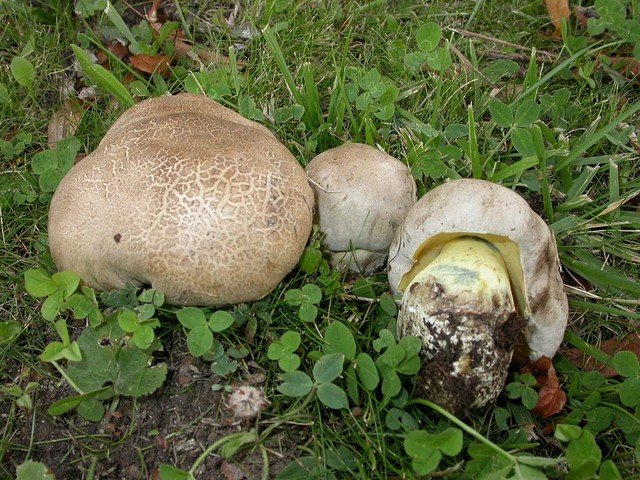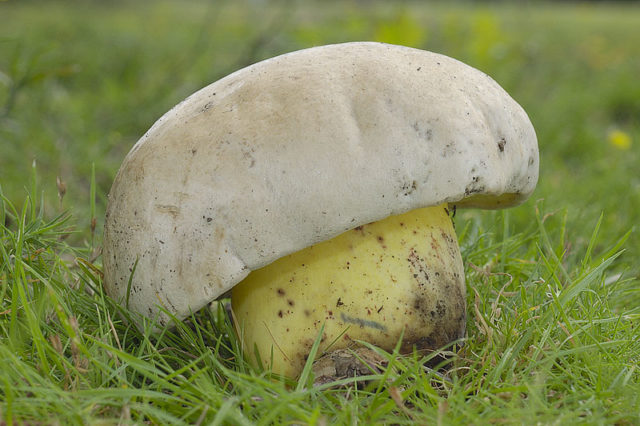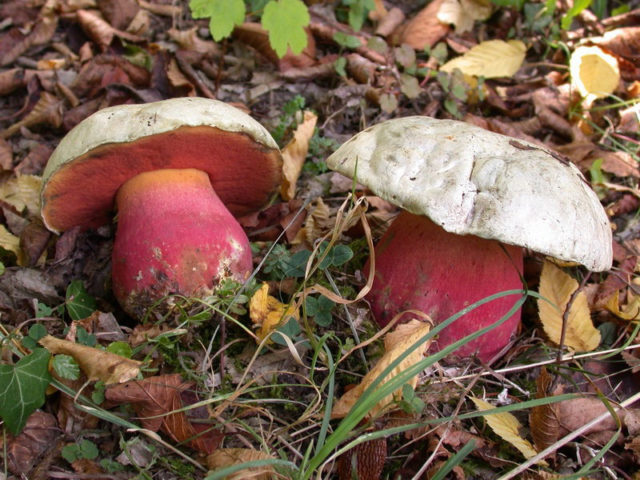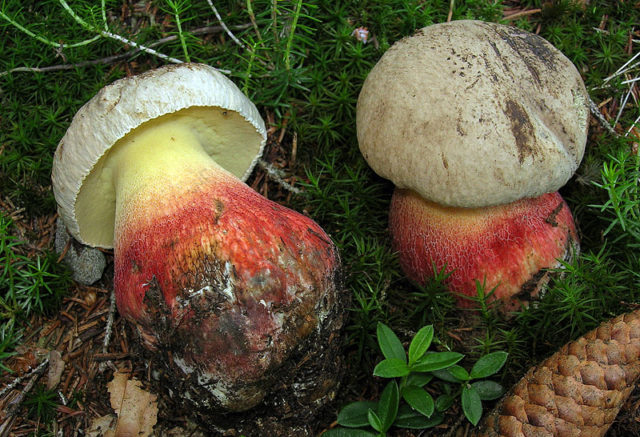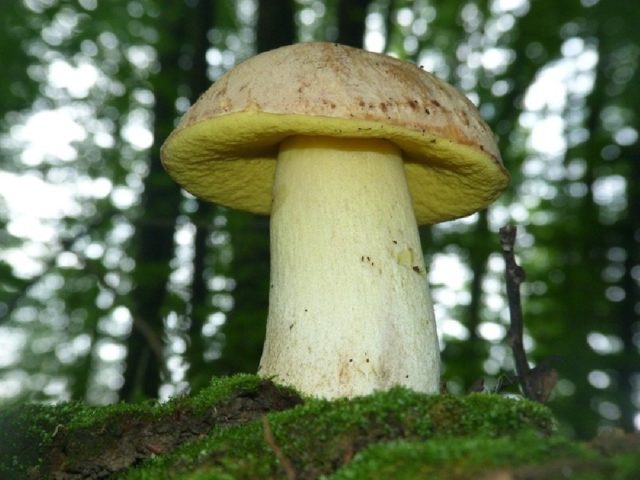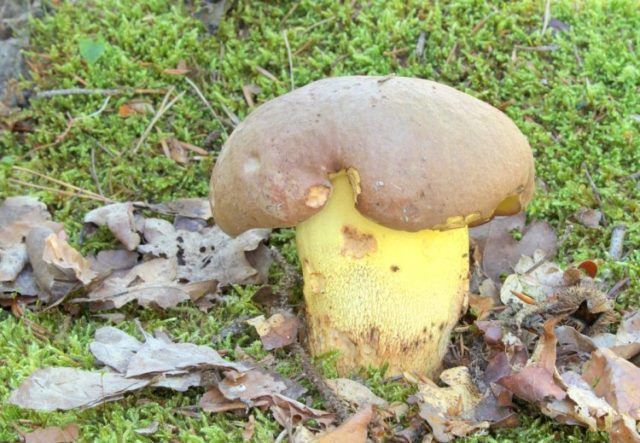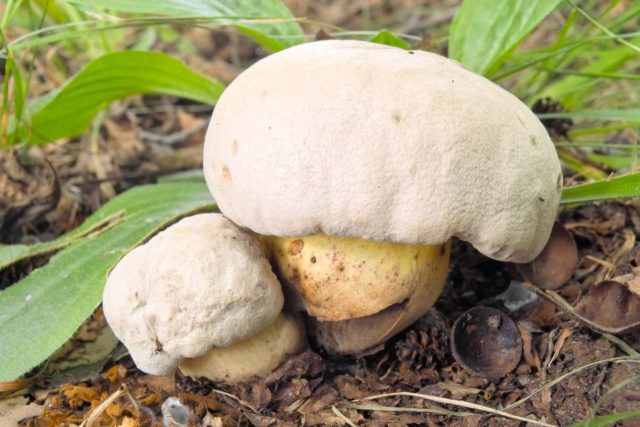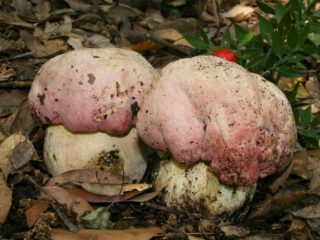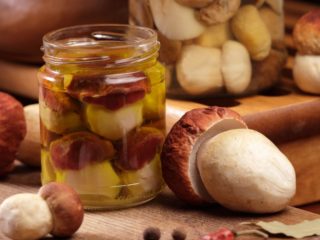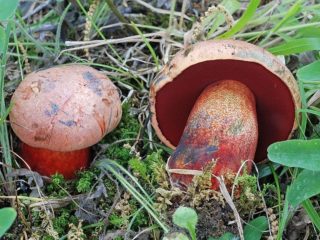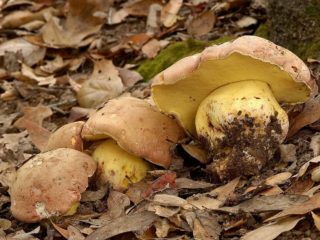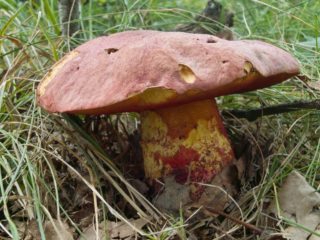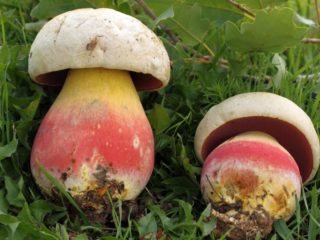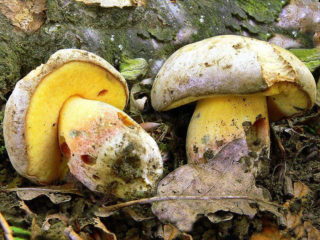Content
Root boletus is a fairly rare inedible mushroom that can be found in southern climates and in the middle lane throughout the world. Although it does not bring severe harm to health, it is not recommended to confuse it with healthy varieties and to eat it.
What rooted boletus look like
The appearance of a rooting boletus is quite typical for the Boletovs. The species, which is also called bitter spongy pain or stocky boletus, has a large cap up to 20 cm in diameter, at an early age the cap has a convex hemispherical shape, then flattens a little, but still remains cushion-shaped. In young rooting pains, the edges are slightly tucked, in adults they are straightened and with a wavy edge. The cap is covered with a dry, smooth skin of a gray, greenish or light fawn color, which turns blue when pressed.
The lower surface of the cap of fruit bodies is tubular, with small rounded pores. At the point of attachment of the stem to the cap, the tubular layer is slightly depressed, the color of the tubules is lemon-yellow in young fruit bodies and with an olive tint in adults. When pressed, the tubular bottom surface quickly turns blue.
The fruiting body rises on the stalk up to an average of 8 cm in height, the stalk reaches 3-5 cm in diameter. In young fruiting bodies, it is tuberous and thick in shape; with age it becomes cylindrical with a preserved thickening in the lower part. In color, the leg is lemon-yellow on top, and closer to the base it is covered with olive-brown or greenish-bluish spots. In the upper part, an uneven mesh is noticeable on its surface. If you break a leg, then at the fault it turns blue.
The flesh of the cap of the rooting boletus is dense and whitish, bluish closer to the tubular layer. When cut from contact with air, it turns blue, has a pleasant smell, but a bitter taste.
Where rooted boletus grow
The root painter prefers mainly warm regions. It is found in North America and Europe, in North Africa, grows in deciduous and mixed forests, especially often forms a symbiosis with birches and oaks. Despite the wide distribution area, it can rarely be found. The period of the most active fruiting occurs in late summer and early autumn, although you can see the bitter spongy ache from July until the very frost.
Rooting Boletus False Doubles
You can confuse the stocky boletus in the forest with several mushroom varieties, edible and inedible. The differences between them are worth learning in order not to accidentally pass by the edible mushroom, mistaking it for a bitter spongy ache.
Satanic mushroom
In size and structure, the varieties are very similar to each other, they are united by a hemispherical convex cap, a dense leg and a predominantly light shade of the cap. But at the same time, the satanic mushroom on the lower part of the leg has a reddish mesh pattern, which the rooting pain does not have, and the shade of its tubular layer is also reddish.
Gall mushroom
The species also has a certain similarity with the widespread gall fungus, the most famous false twin of the edible Boletovs. The so-called bitterness has a leg and a cap that are very similar in shape and structure, but in color it is much darker than a rooted boletus. In addition, the leg of the bitter pot is covered with a well-visible "vascular" mesh, which is absent in the rooting pain.
Inedible boletus
Boletus with an expressive name has an external resemblance to a rooting pain. Both varieties have legs similar in shape and size, convex hemispherical caps with slightly curled edges and a smooth skin.
The inedible pain differs mainly in the color of its cap - light brown, gray-brown or dark olive. In a stocky pain, the cap is usually lighter in color. In addition, the leg of the inedible boletus is colored brighter, in the upper part it is lemon, in the middle it is red, and in the lower it is rich burgundy.
This mushroom, like the rooted boletus, is unsuitable for food use. Its pulp tastes too bitter, and this feature does not disappear when boiled.
Half white mushroom
One of the edible false counterparts of rooting pain is a semi-white mushroom that grows on clayey moist soils in the southern regions of Russia. With rooted boletus, a semi-white mushroom looks like a hemispherical cap and outlines of a leg.
But at the same time, the color of the semi-white mushroom is darker - light brown or dark gray. Its leg is straw-yellow in the upper part and reddish in the lower, the flesh of a semi-white mushroom does not change its color at the break. Another characteristic of the edible species is the distinct smell of carbolic acid emanating from the fresh pulp.
Maiden boletus
An edible species with a pleasant taste, reminiscent of a bitter spongy ache - this is boletus, which grows in deciduous forests, but is quite rare. The varieties are similar in shape to each other in the shape of the cap, in young specimens it is convex, in adults it is pillow-shaped. Also, the bolts are almost the same size.
But at the same time, the girlish boletus has not a cylindrical, but a conical leg, in the lower part it slightly narrows and sharpens. His hat is chestnut brown or light brown, darker, and the leg acquires a dark shade in the upper part.
Maiden boletus are almost as rare as rooted boletus, but unlike them, they have a great taste and decorate any dish.
Is it possible to eat rooted boletus
Chunky Sore belongs to the category of inedible mushrooms. It does not contain toxic substances, and its use cannot lead to serious poisoning. However, the pulp of such a fruiting body is too bitter. It is simply pointless to soak an inedible find in salt water or boil it, because the bitter taste does not go away from it.
If you accidentally add a bitter spongy ache to a dish, all other foods will be hopelessly spoiled by the bitter taste of mushroom pulp. With increased sensitivity of the stomach or in the presence of allergies from the use of a bitter pain, you can get indigestion, diarrhea or vomiting - the substances in its pulp will have an irritating effect on the mucous membranes. However, an upset stomach will not entail any consequences, and there will be no toxic substances in the body.
Conclusion
Root boletus is a mushroom unsuitable for food use, which has similar features to many edible and inedible representatives of the Boletovs. It is useful to study the features of the pain in order not to add it to a culinary dish by mistake and not to mistake tasty and healthy fruit bodies of other species for an inedible pain.
